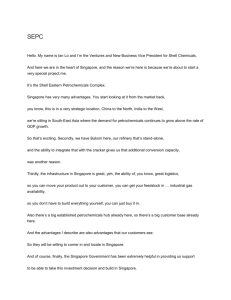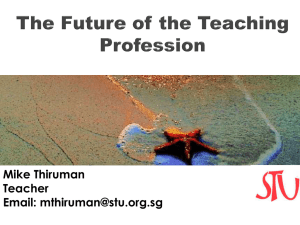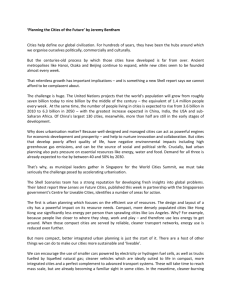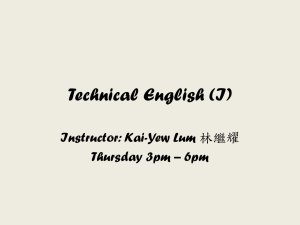indrestruct
advertisement
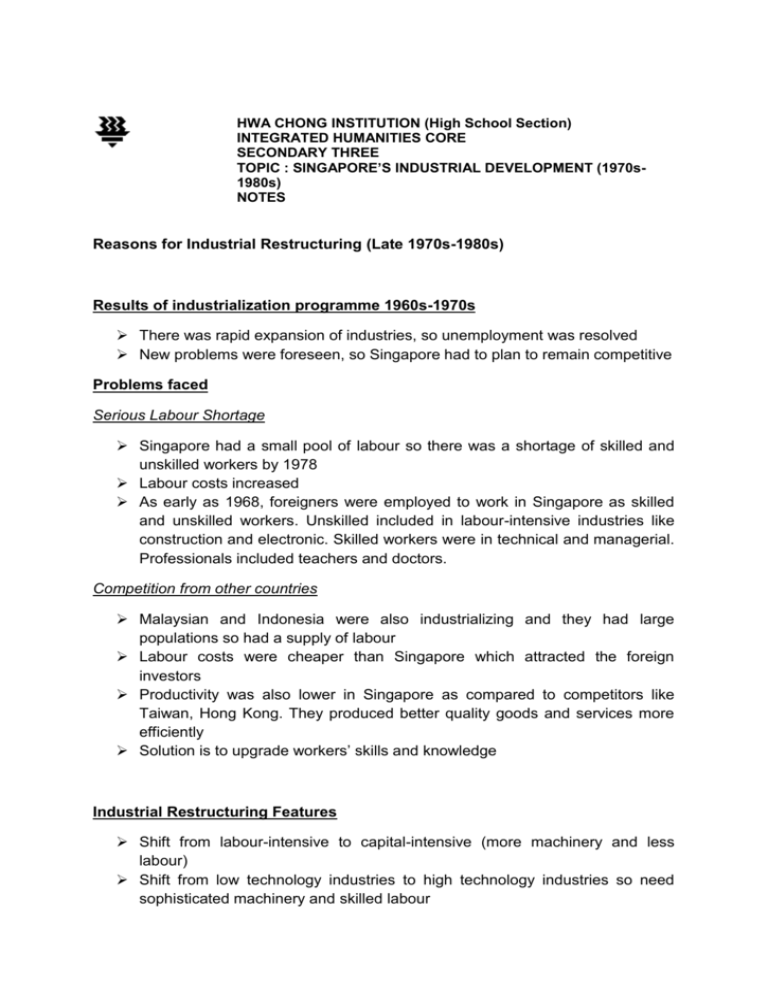
HWA CHONG INSTITUTION (High School Section) INTEGRATED HUMANITIES CORE SECONDARY THREE TOPIC : SINGAPORE’S INDUSTRIAL DEVELOPMENT (1970s1980s) NOTES Reasons for Industrial Restructuring (Late 1970s-1980s) Results of industrialization programme 1960s-1970s There was rapid expansion of industries, so unemployment was resolved New problems were foreseen, so Singapore had to plan to remain competitive Problems faced Serious Labour Shortage Singapore had a small pool of labour so there was a shortage of skilled and unskilled workers by 1978 Labour costs increased As early as 1968, foreigners were employed to work in Singapore as skilled and unskilled workers. Unskilled included in labour-intensive industries like construction and electronic. Skilled workers were in technical and managerial. Professionals included teachers and doctors. Competition from other countries Malaysian and Indonesia were also industrializing and they had large populations so had a supply of labour Labour costs were cheaper than Singapore which attracted the foreign investors Productivity was also lower in Singapore as compared to competitors like Taiwan, Hong Kong. They produced better quality goods and services more efficiently Solution is to upgrade workers’ skills and knowledge Industrial Restructuring Features Shift from labour-intensive to capital-intensive (more machinery and less labour) Shift from low technology industries to high technology industries so need sophisticated machinery and skilled labour Shift from low value-added industries to high value-added industries – these produced goods which are high-priced Examples include aerospace and petrochemical industries Strategies of industrial restructuring Higher Wages National Wage Council (NWC) recommended higher wages to encourage towards moving to capital-intensive, high-technology and high value-added industries. Question : How restructuring? does the wage increase bring about industrial Examples include Singapore Bus Service switch to One-man-operated Ticketing System, banks computerised their services Productivity Campaigns Workers were encouraged to take pride in their work. What problem did this aim to resolve? This was done through various ways such as newsletter and advertisements. Education In 1979, National University of Singapore increased its intake of engineering students Nanyang Technological Institute was set up in 1982 to train more engineers for industry Singapore Polytechnic and Ngee Ann Polytechnic expanded its intake greatly New industrial training institutes were jointly set up by the government and foreign companies Government set up a fund to upgrade workers’ skills and retrain workers who had lost their jobs Provided financial assistance to subsidize workers’ training and provided interest-free loans to companies to purchase new machinery. What was the purpose of the above strategies? Increased emphasis on Research and Development (R&D) There was a need to improve existing products and develop new ones to remain competitive So R&D was introduced in some areas like electronics and computer hardware. The aim was to search for new and improved products and manufacturing processes Jurong Town Corporation developed Singapore Science Park to house various R&D firms and various government research institutes. Encouraged close cooperation between universities and industries. Manufacturing firms involved in R&D were given tax incentives. Funds also given to local companies to carry out R&D New and Better Industrial Facilities To encourage investments in high-technology industries, JTC built special buildings and facilities like Loyang Industrial Estate which was Singapore’s first aviation centre. It manufactured aircraft parts It is also an engineering and manufacturing base to support offshore oil and mineral exploration Older industrial estates had the buildings and infrastructure upgraded. These include factories in Tiong Bahru and Redhill Different types of high-technology industrial parks consisting of industrial, commercial and office facilities were built. What are industrial parks? What purpose do they serve? JTC also developed fabrication parks in Woodlands and Tampines. A number of the world’s leading wafer fabrication plants are operating in Singapore. What are fabrication parks? To meet the growing need for industrial land, a cluster of seven islands off the southern coast of Singapore was reclaimed to form Jurong Island and a causeway linking Singapore to Jurong Island was built. Petrochemical plants are located there. Better Support Services Needed to improve transport, telecommunication and banking so as to provide support to the manufacturing industries to help Singapore become a business centre in SEA 1981 – Changi Airport was built 1984 – second runway was built to cater to increasing passengers Big air cargo complex was built to handle the increased volume of high valueadded exports Taxis were improved and the Mass Rapid Transit (MRT) was developed to provide support for growing business Singapore telecommunications links to the world is upgraded annually so that travel reservations and arrangements can be made easily Banking, accounting and advertising, sometimes called as ‘brain services’ continued to be expanded. Why are they called ‘brain services’? Results of Industrial Restructuring Standard of living is raised Income and savings have helped develop a modern armed force with advanced defence technology Strengthened Singapore’s economy Singapore government is practical, efficient and far-sighted. Why do you think so? Source Upper Secondary Social Studies 3, MOE, Longman 2001 S.J.Ranee/HCI’11/ IHC Sec 3/Notes

